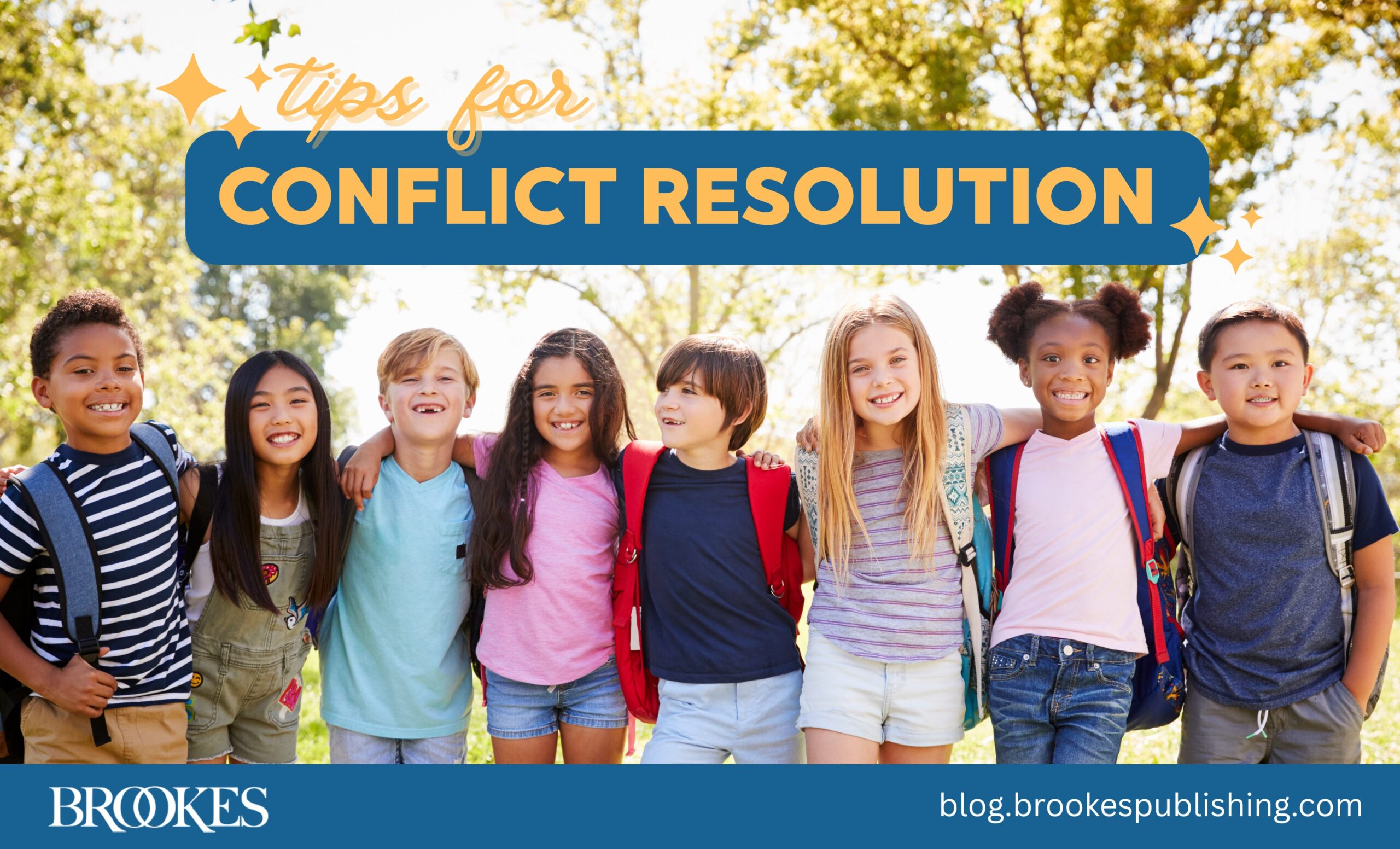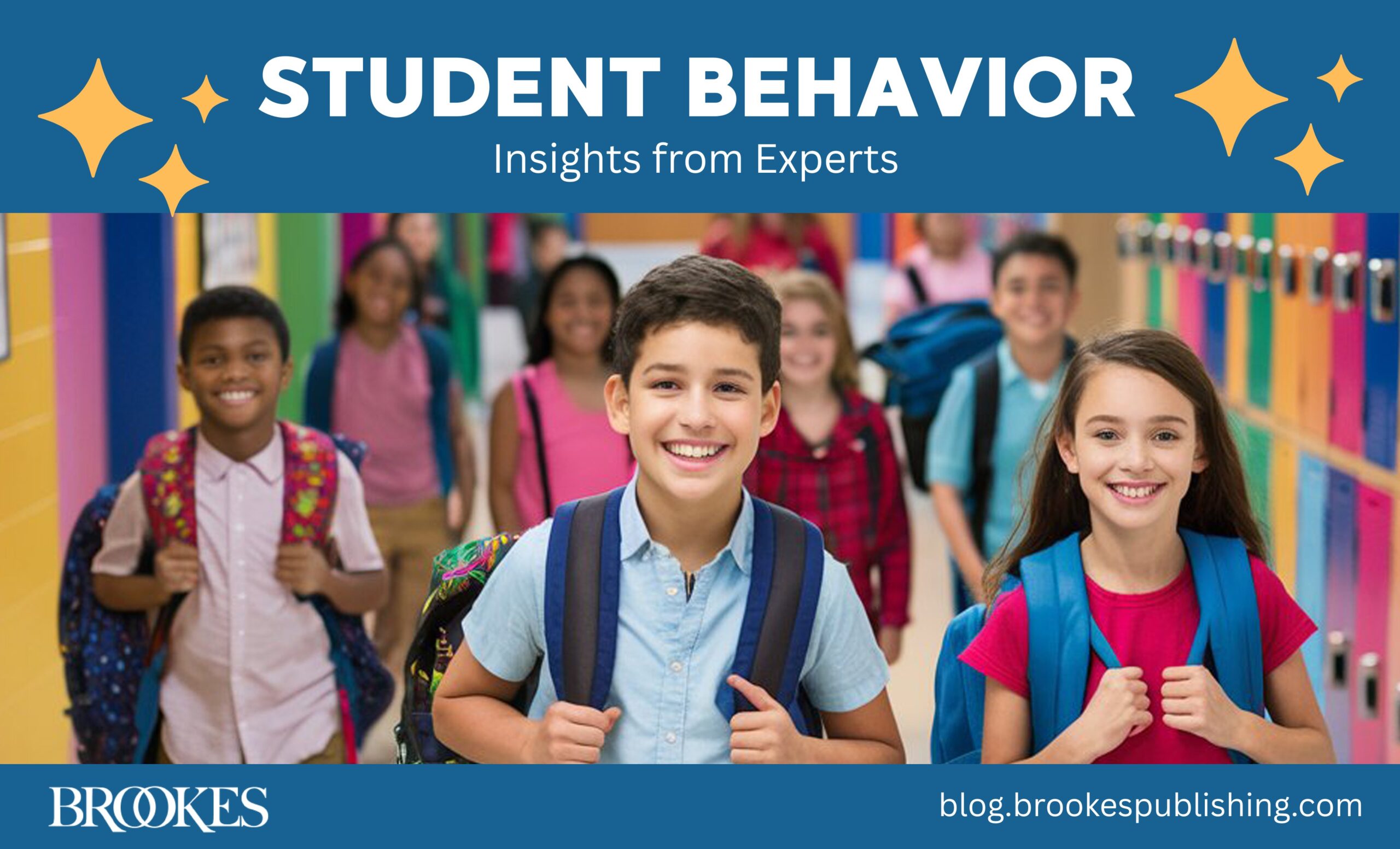4 Key Steps to Student Conflict Resolution
June 11, 2025
Conflicts between classmates are a normal part of growing up. But left unchecked, peer problems can interrupt classtime, cause emotional stress, and derail your students’ learning. Giving students some simple conflict resolution tools can help them work through peer problems before they interfere with academics and lead to bigger social-emotional challenges.
 To nurture critical social skills and emotional development, many teachers seek out programs they can work into their existing curricula. Merrell’s Strong Kids is one of the best—it’s a set of age-appropriate curricula that help students develop the social skills they need to manage their challenges and succeed in school and life. Excerpted and lightly adapted from Strong Kids—Grades 3-5, this post gives you a few sample scripts and activities you can use to teach students healthy, positive conflict resolution strategies.
To nurture critical social skills and emotional development, many teachers seek out programs they can work into their existing curricula. Merrell’s Strong Kids is one of the best—it’s a set of age-appropriate curricula that help students develop the social skills they need to manage their challenges and succeed in school and life. Excerpted and lightly adapted from Strong Kids—Grades 3-5, this post gives you a few sample scripts and activities you can use to teach students healthy, positive conflict resolution strategies.
Introduce the four-step problem-solving model
A problem-solving model is a way to solve disagreements one step at a time. Conflict resolution is challenging, and using problem-solving strategies to achieve a workable compromise requires patience and creativity. Here’s a sample script and a handout you can use with your students to introduce a four-step problem-solving model.
Sample script to introduce the model: Sometimes, conflicts can seem confusing and impossible to resolve. It’s even hard to figure out what the conflict is exactly, and it may make you want to just not deal with it at all or to resort to giving the other person the silent treatment. Ignoring conflicts may seem to work in the moment, but in the long run, the problem is not being dealt with in a healthy way. Today we’ll learn how to look at a problem in small steps to help us see the conflict more clearly in order to problem-solve in a situation.
Give your students this handout to discuss the four steps to problem solving:
- Identify the problem
- Develop a plan
- Evaluate the plan
- Implement the plan
Remind students that they can reference this handout to help them remember the steps.
Sample script to introduce the handout: Did you know there are four steps we can use to solve a problem? We’re going to practice using these with different situations. Using the steps will help us come to a good solution. You’ll also learn about showing empathy and how to compromise when it is appropriate in social interactions. In situations where you try and nothing is working in the moment, you may sometimes have to smile, be patient, and politely say, “I hear what you’re saying. Maybe we can talk about this another time and try again to solve the problem?” Or sometimes, if everyone doesn’t know about the four steps to problem solving, it can turn into a bigger argument. Be patient and open-minded to different perspectives and strategies. Here are the four steps in the problem-solving model and a visual picture to help you remember.
After you review the handout together, you can use these two activities to help your students apply the four-step model to real-life scenarios they might encounter.
Activity 1: Problem-Solving Application
Objective: Using the handout as a guide, apply the Four-Step Problem-Solving model to three example situations.
Sample script to introduce the activity: Now that we’ve talked about the steps, let’s apply some example situations to these steps. I’ll read the first situation and we will discuss the steps together as a class. We’ll write our thoughts in the middle column under Situation 1. For Situation 2, you’ll partner with the person next to you [or get into small groups], go through the problem-solving model, and write down your ideas in the Situation 2 column.
Situation 1
Problem: Your classmate wants to use the only class computer at the same time you do.
Twist: You know that your classmate does not have a computer at home, but you do.
Situation 2
Problem: Your classmate has broken your trust by telling a secret of yours.
Twist: Now would it make a difference if you had already shared it with a few other people?
Situation 3
Problem: You overheard that your friend said something mean about you that isn’t true and your feelings are hurt.
Twist: Your friend will be attending your birthday party this weekend and you know that she has something special planned for you.
Have students brainstorm solutions to these sample scenarios, and then discuss the proposed solutions as a class.
Activity 2: Discuss Examples and Nonexamples of Problem Solving
Objective: As a class, talk about productive and nonproductive ways in which a conflict might be approached.
Sample script to introduce the activity: Let’s discuss examples of problem-solving strategies–what to do and what not to do. First, let’s consider a situation where two kids are fighting over a laptop. I will read aloud some strategies and you tell me if they are examples (healthy) or nonexamples (unhealthy). Examples are the strategies we want to do. Nonexamples are what we don’t want to do. Then, I’d like for you to share in small groups your own situations and strategies that you have used in conflicts. Think about situations at school, at home, or in your community.
Review the six problem-solving scenarios listed below to facilitate this discussion. For each one, ask your students to evaluate whether the scenario is an example or nonexample of a helpful way to solve a problem. If there are other current conflicts that are particularly relevant to your students’ experience, you can also use those as examples. (Keep in mind that certain problem-solving skills may be inappropriate in some situations. For example, trying to have a discussion with a potentially dangerous individual may not be appropriate).
PROBLEM: Two students want the same laptop during science class.
- Problem-solving scenario 1: The students identify the problem, say what they each want to happen with the laptop, and each list and discuss a few potential solutions. One of the solutions is to equally split the time each uses the laptop. They agree on this solution and shake hands. (This is an example of a helpful way to solve a problem.)
- Problem-solving scenario 2: The students argue, interrupt each other, and grab the laptop back and forth from each other, and then one student tells the teacher. (This is a nonexample of a helpful way to solve a problem.)
- Problem-solving scenario 3: The students identify the problem, say what they each want to happen with the laptop, and each list and discuss a few potential solutions. They can’t agree on any of the solutions and so they continue to argue with each other. Eventually, they bring other students into the situation. (This is a nonexample of a helpful way to solve a problem.)
- Problem-solving scenario 4: The students identify the problem, but each student is so interested in describing what they each want to happen with the laptop that they don’t really listen to what the other person wants. (This is a nonexample of a helpful way to solve a problem.)
- Problem-solving scenario 5: The students identify the problem, say what they each want to happen with the laptop, and each list and discuss a few potential solutions. One of the solutions is to agree to use the laptop on different days, and give one another their “word.” The students ask each other the next day if this plan still works for them to play. (This is an example of a helpful way to solve a problem.)
- Problem-solving scenario 6: The teacher takes the laptop away from both students; the students give each other a dirty look, and both are angry because now they don’t get to use the laptop. (This is a nonexample of a helpful way to solve a problem.)
LEARN MORE ABOUT STRONG KIDS
If you liked this post, there’s much more in Strong Kids! Through engaging, thought-provoking classroom activities, these social-emotional learning curricula help students explore their feelings and learn skills they’ll use for the rest of their lives: managing anger, reducing stress, solving interpersonal problems, and much more. Learn all about Strong Kids here.





Write a Comment
Your email address will not be published. Required fields are marked *
comments
Google Customer Care says
That's an interesting article to go through. Child psychology is the toughest thing to grasp and the mental configuration at various times and the changes in it is brilliantly analysed and represented with real-time situations. Loved it!!!
rosy som says
Wonderful site, article mention on this site helps the student for attending positive things and develops social-emotional skills after reading it you got some problem-solving strategies that are beneficial for whole life
Marianne Martlink says
This was a very interesting site. I liked the way it helped build lifelong learning skills and strategies to use now and in the future. The practice of learning from mistakes is one of the best skills anyone can master. Ultimately, we need to take responsibility for our choices, and to set goals.
Violet Catches says
Its a great way to impart how to resolve conflicts. It's a tool that ought to be included in teacher training programs. In the long run our students will develop life long learning skills. I like this method.
jlillis says
Thank you for reading, Violet!
Post a Comment